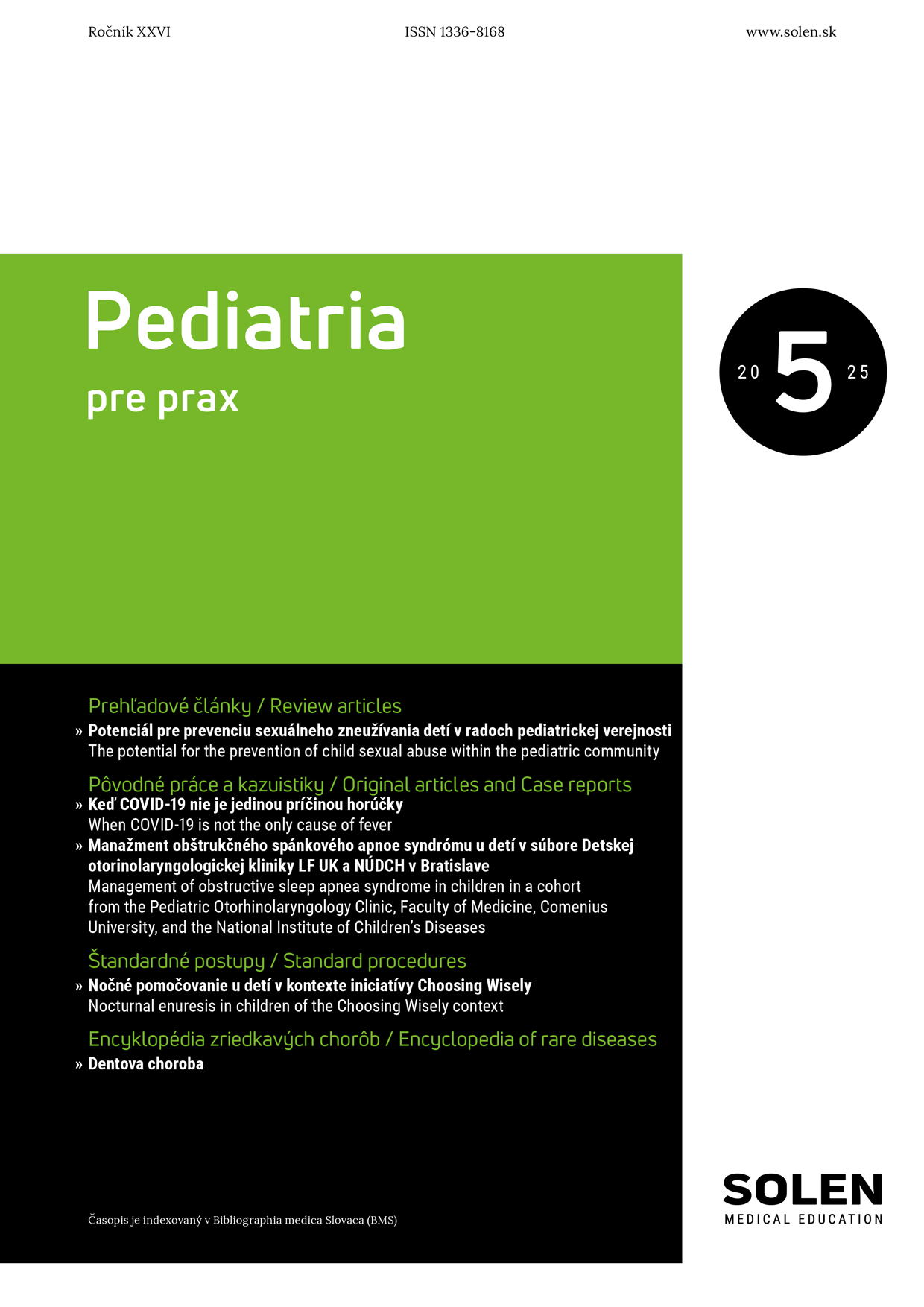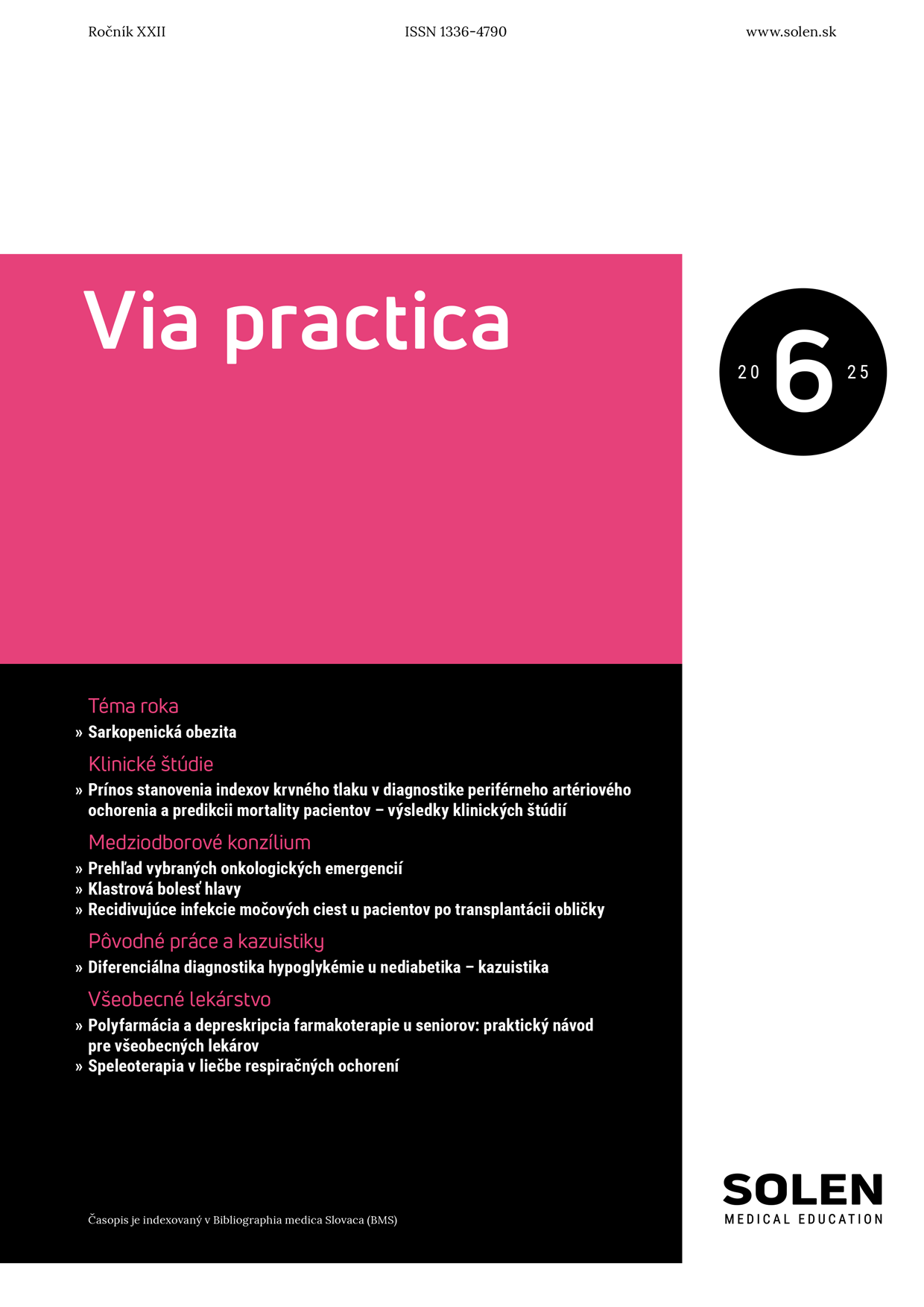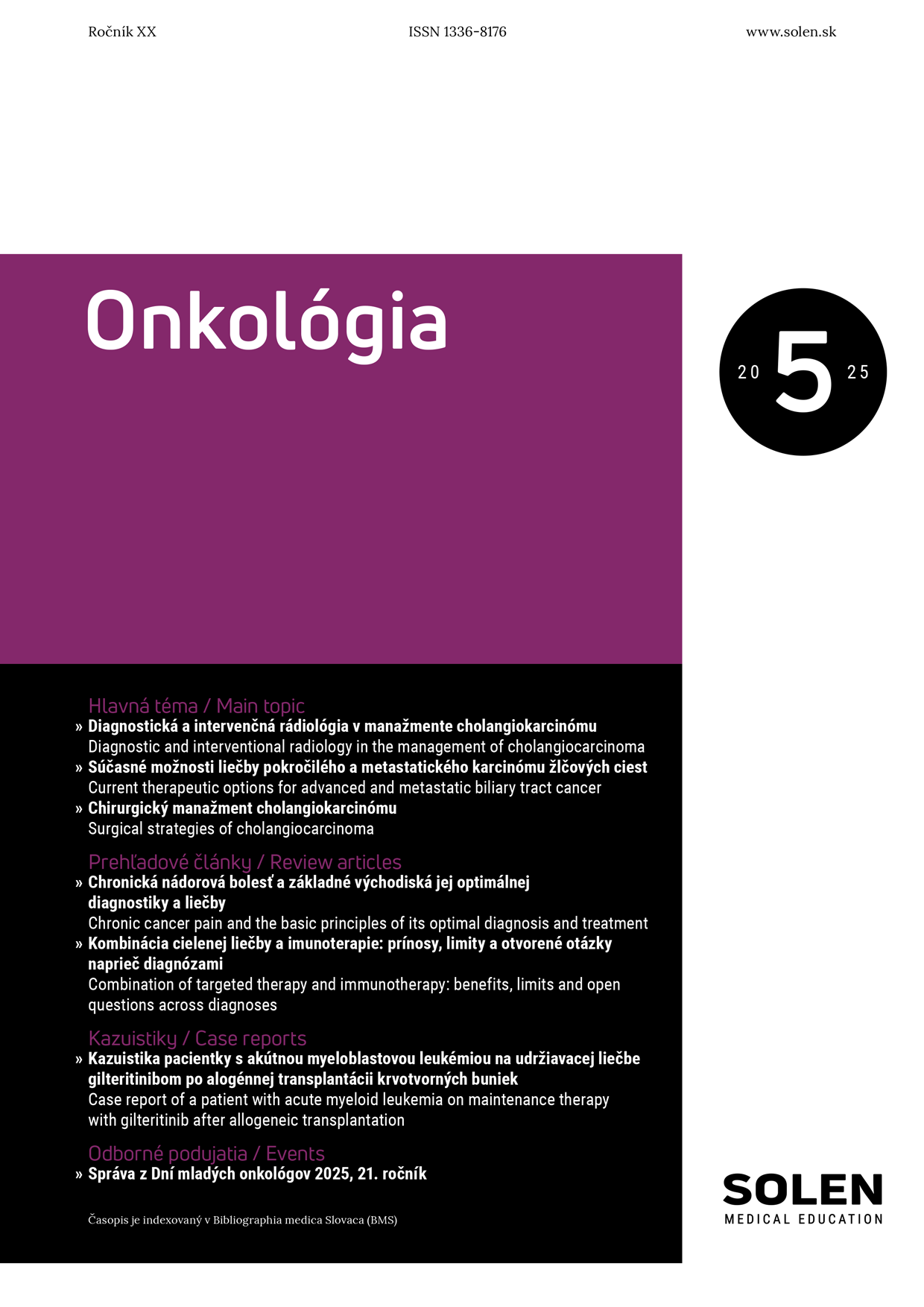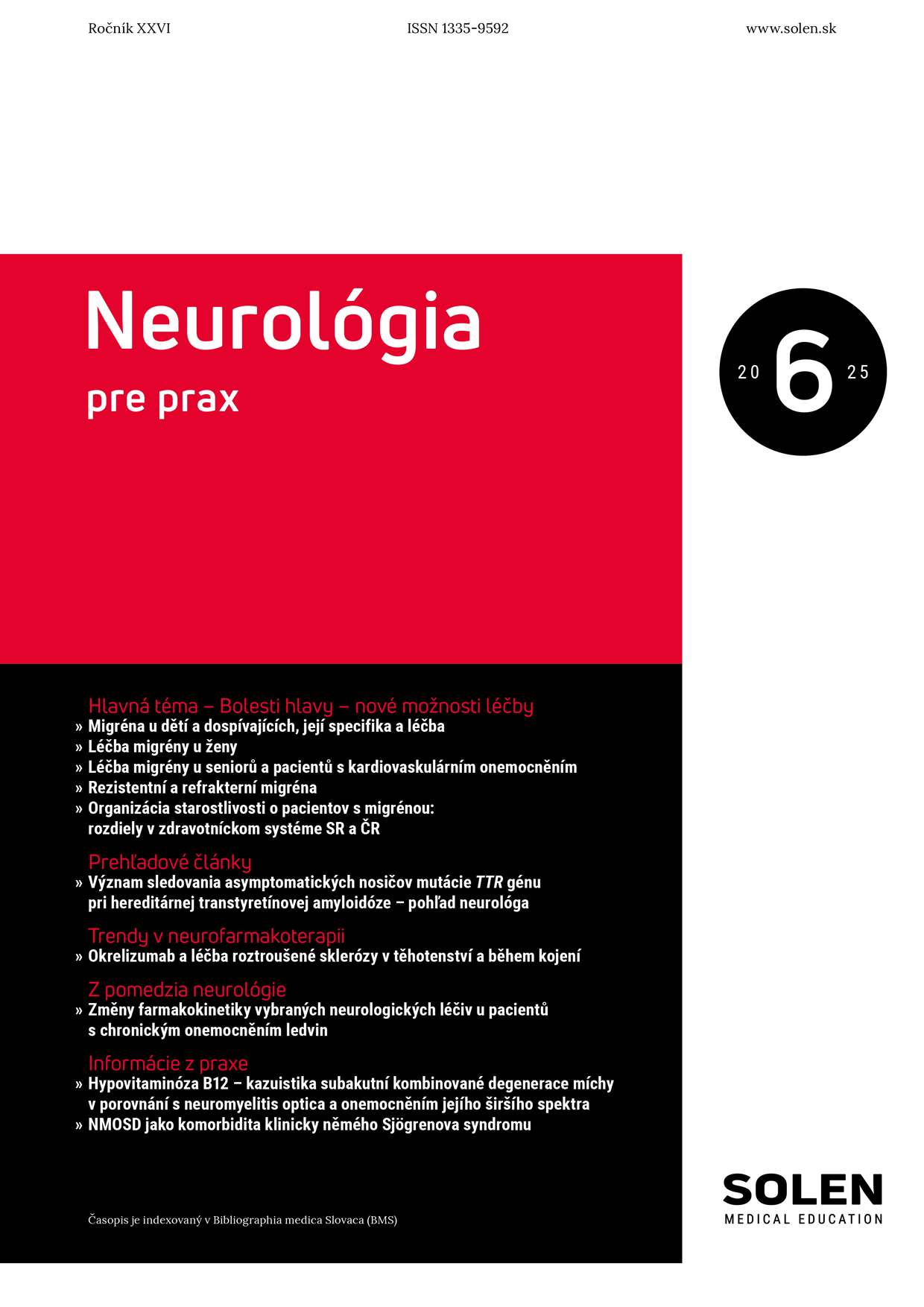Vaskulárna medicína 1/2023
Krvácanie z gastrointestinálneho traktu u pacientov s COVID-19
MUDr. Martin Schnierer, PhD., doc. MUDr. Peter Bánovčin, PhD., MBA
Úvod: Pri COVID-19 sú okrem symptómov postihu respiračného systému, častým sprievodným príznakom aj symptómy postihnutia gastrointestinálneho traktu. Častou komplikáciou ochorenia sú aj tromboembolické príhody, čo vedie k včasnej a častej indikácii profylaktickej a terapeutickej antitrombotickej terapie. Incidencia gastrointestinálnych príznakov pri COVID-19 je udávaná v rozmedzí 3 až 61 %. Medzi ne patrí aj krvácanie z gastrointestinálneho traktu, často potenciované antitrombotickou terapiou. Recentné štúdie uvádzajú mieru rizika krvácania z gastrointestinálneho traktu v rozmedzí 1,1 až 13 %. Metodika: V našej retrospektívnej štúdii bolo pre príznaky akútneho krvácania endoskopicky vyšetrených 30 pacientov s COVID-19 (jedno kolonoskopické vyšetrenie a 29 ezofagogastroduodenoskopií). Akútne bolo kolonoskopicky vyšetrených 24 pacientov bez COVID-19 a 178 pacientov podstúpilo ezofagogastroduodenoskopiu. Prezentujeme rozdiely v nálezoch jednotlivých skupín. Výsledky: Najčastejšou príčinou krvácania u pacientov s COVID-19 boli erózie antra a pažeráka. Rovnako väčšina pacientov s krvácaním mala v terapii antikoagulancia a kombinácia antikoagulačnej a antitrombotickej terapie. Záver: Krvácavé komplikácie u pacientov s COVID-19 sú z dôvodu antitrombotickej terapie relatívne časté a vyžadujú komplexný manažment. Z dôvodu často prítomnej respiračnej tiesne sú akútne endoskopie odkladané do stabilizácie pacienta a je volený konzervatívny postup, ktorý môže byť často prínosnejší pre pacienta s ťažším priebehom COVID-19.
Kľúčové slová: COVID-19, krvácanie, SARS-CoV-2, akútna endoskopia, antitrombotická terapia
Gastrointestinal bleeding in patients with COVID-19
Introduction: In COVID-19, in addition to symptoms of respiratory system involvement, symptoms of gastrointestinal tract involvement are frequent comorbidity. Thromboembolic events are also a common complication of the disease, leading to the early and frequent indication of prophylactic and therapeutic antithrombotic therapy. The incidence of gastrointestinal symptoms in COVID-19 is reported to range from 3 to 61%. These include gastrointestinal bleeding, often made more potent by antithrombotic therapy. Recent studies report a risk rate for GI bleeding ranging from 1.1 to 13%. Methods: In our retrospective study, 30 patients with COVID-19 (one colonoscopic examination and 29 esophagogastroduodenoscopies) were examined endoscopically for signs of acute bleeding. Acutely, 24 patients without COVID-19 were colonoscopically examined and 178 patients underwent esophagogastroduodenoscopy. We present the differences in the findings of the different groups. Results: The most common cause of bleeding in patients with COVID-19 was antral and oesophageal erosions. Additionally, most patients with bleeding had anticoagulants and a combination of anticoagulant and antithrombotic therapy in their therapy. Conclusion: Haemorrhagic complications in patients with COVID-19 are relatively common due to antithrombotic therapy and require complex management. Due to often present respiratory distress, acute endoscopies are postponed until the patient stabilises and conservative treatment is chosen, which may often be more beneficial for the patient with a more severe course of COVID-19.
Keywords: COVID-19, haemorrhage, SARS-CoV-2, acute endoscopy, antithrombotic therapy

















